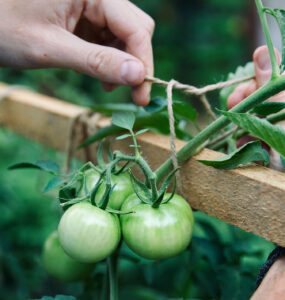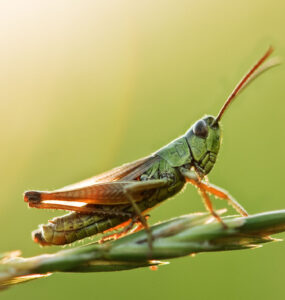Black Knot
by Rob Sproule
The outbreak of black knot in Edmonton is approaching epidemic proportions. This easy to control fungus destroys garden aesthetics, disfigures branches, and eventually kills trees.
Whether driving or walking, you’ve probably seen black knot in the past few days. It’s startlingly evident in the winter when the bare branches look like they have charred masses of burnt rope wrapped tight around the branches and trunk.
Black Knot is a fungal infection (Apiosporina morbosa), that afflicts trees in the Prunus genus. In Alberta, this includes plum, apricot, and cherry trees, although it’s most aggressive on Maydays and Schubert Chokecherries.
It causes damage by turning trees’ own branches against them. The fungus causes rapid growth of plant cells until they distort and stunt the tree. Left unchecked, the knots will spread lengthwise every year, slowly devouring their host.
Black Knot Lifecycle
A big reason why Black Knot spreads so quickly is that it doesn’t assume its classically nasty, charcoal look until after it’s gone to spore and infected the trees around it. Before that, it’s easy to overlook.
It spreads fastest during warm ,wet springs. If you’re vigilant, you’ll see a brown swelling on this year or last year’s growth. It will look as if the branches was stung by a bee and swelled up.
Fast forward to the following spring. Now the fungus grows into a bulbous olive green knot. This is when it gets nasty.
Around the time when the tree leafs out, the black knot goes to spore, with the spores typically reaching peak nastiness as the tree blooms. The more spring rain we get, the more spores we get, which the wind promptly carries to neighboring trees.
Spores may emerge in the Fall is it’s wet enough, but with our tendency to have dry autumns that tends not to happen. Typically, the fungus needs 6 hours of near steady rain in order to “flower.”
Controlling Black Knot
Black Knot is nothing new. It was described in Pennsylvania almost 200 years ago and wreaks on again/off again havoc with commercial fruit crops in North America. It’s a natural disease, but our love of the Prunus genus has given it the opportunity to become unnaturally invasive.
The only reliable treatment is pruning. All infected growth needs to be cleanly cut off 6-10 inches down from the knot. If the infection is widespread, this often means taking out the tree. It’s a tough task but necessary for the sake of your, and your neighbours’, other trees.
Treat infected branches like hazardous waste, as they can spit out spores for 4 months after pruning. Burn or throw them away but don’t compost them. If you put them in the trash, wrap the knotty bits in a plastic bag.
As you prune, keep a bleach solution nearby to sterilize your cutters after every cut. That may sound excessive, but otherwise you may be leaving trace amounts of spores on every branch the blades touch.
Never prune out black knot in the spring or in wet, warm weather. The ideal time is between Halloween and the end of March, when the tree is dormant and the lack of leaves make for easy navigation.
Prevention
The best and most obvious way to prevent Black Knot is to clean it from your yard and, if your neighbours have it, to educate them about its seriousness in the hopes that they will do the same. Bad tree diseases don’t always make for bad neighbours; sometimes they are the common cause needed to bring neighbours together.
Fungus thrives in moisture. If you water your yard when it doesn’t need watering, please stop. Consider irrigating with a drip hose or another tool that keeps moisture close to the ground instead of spraying it into the air (and the trees); this will help you conserve water as well as avoiding Black Knot.
Prune your trees regularly to clear out old wood and to keep the air circulating in and around the tree. This keeps branches drier and less hospitable for fungus.
If you have a lot of deer, porcupines, and/or other critters nibbling your tree bark, wrap it tight the winter. Black Knot spores love finding homes in fresh, moist scar tissue.
















